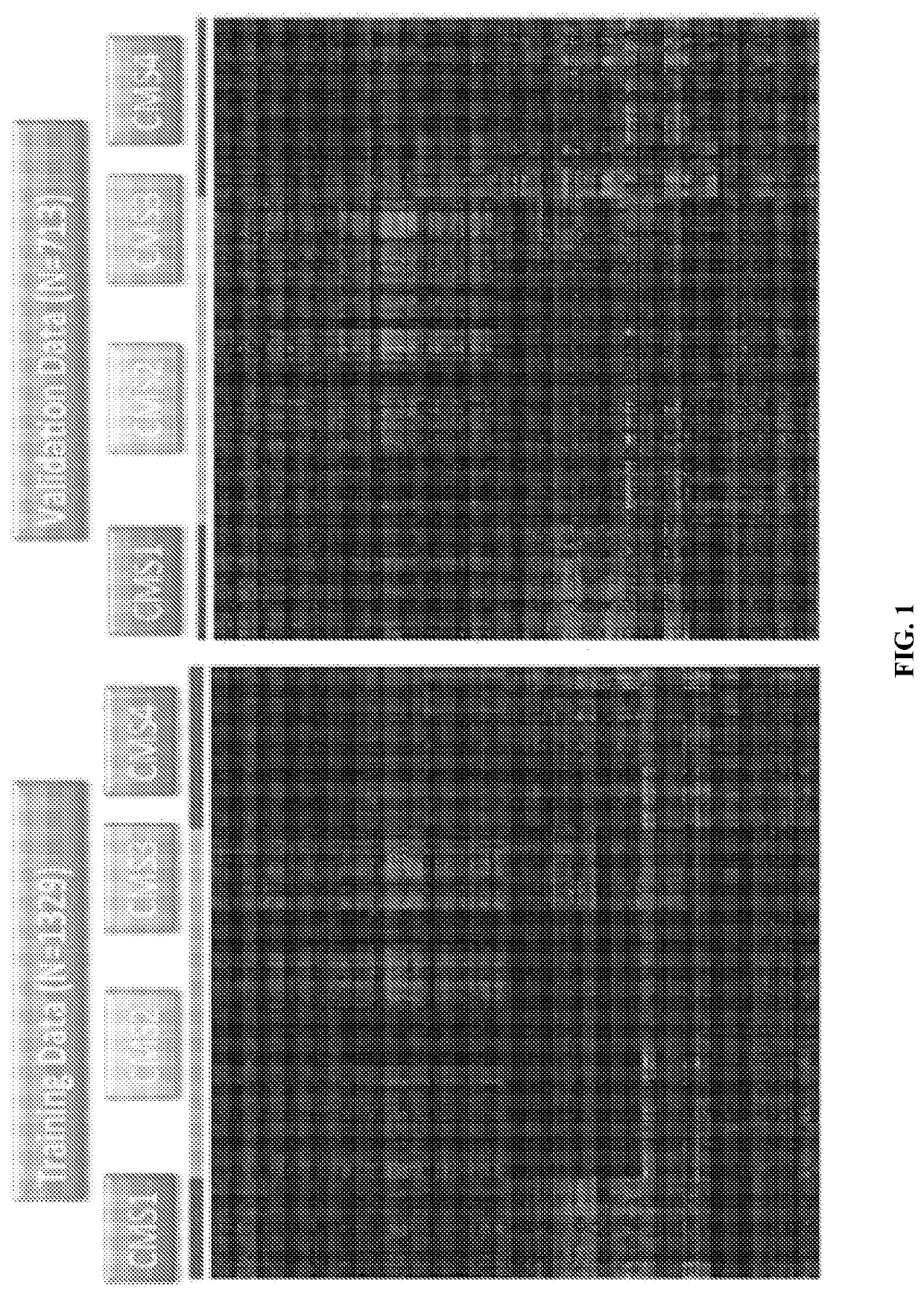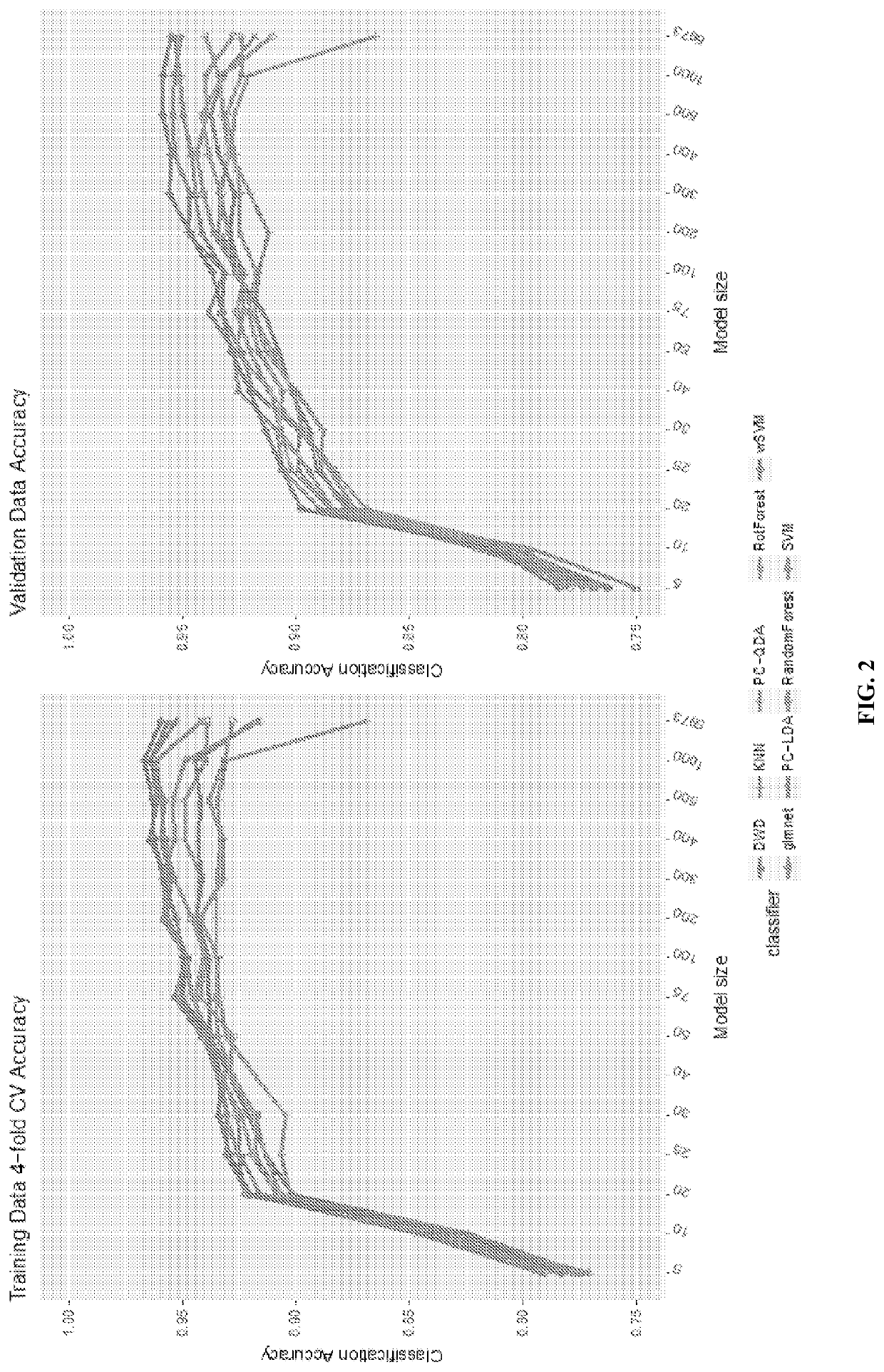Colorectal cancer consensus molecular subtype classifier codesets and methods of use thereof
a colorectal cancer and consensus technology, applied in the field of colorectal cancer classification, can solve the problems of unable to apply in the community, fresh tissue requirement precludes practical application, and the signature is not available for formalin fixed paraffin embedded samples using the same platform, and the effort to transfer the signature from an agilent array to formalin fixed paraffin embedded samples has not been successful
- Summary
- Abstract
- Description
- Claims
- Application Information
AI Technical Summary
Benefits of technology
Problems solved by technology
Method used
Image
Examples
example 1
and Samples
[0074]CRCSC training and validation data sets: CRCSC data sets were used to train and validate the CMS classifier. Samples that were part of the “consensus” set in Guinney et al. (2015) were used for this exercise, meaning that they had “gold standard” CMS status, defined based on agreement among the six different subtyping systems, against which they could be compared to assess classification accuracy. Table 2 shows the data sets used, including tissue type (fresh frozen (FF) or formalin-fixed paraffin embedded (FFPE)), total number of samples, total number of consensus samples, and number used in data set V1 (used for training the classifier) and V2 (used in validating the classifier).
TABLE 2Summary of data sets used in training and validating the CMS classifier.DatasetPlatformTissueTotalConsensus SamplesV1 (train)V2 (validate)AMC_AJCAffy HG133plus2FF90804931CIIFrenchAffy HG133plus2FF556466273185(GSE33113)NKIAZAffy HG133plus2FF62513318(GSE35896)G5E13067Affy HG133plus2FF...
example 2
s Methods
[0094]Development and Validation of CMS Classifier on CRCSC: An analytical workflow was used to build an optimized classifier mainly designed for FF samples using the CRCSC data, upon which the FFPE-based classifier was also based. The goals were to (1) develop an optimized classifier and (2) find out how parsimonious the classifier could be while still yielding acceptable classification accuracy. A more parsimonious classifier with fewer genes has greater potential for validation for clinical use.
[0095]Following are the steps that were followed in building and validating this classifier:
[0096]Step 1. As described above, the CRCSC data sets were split into a training data set, V1, consisting of 1,329 samples from 12 studies, and a validation data set, V2, including 1,329 samples from 14 studies. The performance of a subset of the validation data that were Affymetrix U133Plus2.0 arrays was also considered, which consisted of 929 Samples from 12 Studies (V2a), a subset of tho...
example 3
g FFPE Classifier
[0146]Comparison of Methods on CRCSC Data Set, 4-fold Cross Validation of Training Data V1: FIG. 2 and Table 3 present the classification accuracy of each proposed method using 4-fold cross validation of the training data set (V1) for models of various size from 5 genes up to the full set of 5,973 genes considered in Guinney et al. (2015), with gene lists determined by Multi-class Adaboost as described above. For all methods, classification was forced into a single CMS (“most likely CMS”) and compared with the gold standard “consensus” CMS from Guinney et al. (2015).
[0147]All methods performed well, with performance that decayed only slowly with the number of genes. Improved performance was seen with refined gene lists smaller than the original 5,973 genes, with outstanding performance even for smaller models with several methods having 4-class accuracy of >0.94 for the 75 gene model, and >0.90 even for some of the 20-50 gene models.
[0148]The wSVM, SVM, and DWD meth...
PUM
| Property | Measurement | Unit |
|---|---|---|
| follow-up time | aaaaa | aaaaa |
| thick | aaaaa | aaaaa |
| median survival time | aaaaa | aaaaa |
Abstract
Description
Claims
Application Information
 Login to View More
Login to View More - R&D
- Intellectual Property
- Life Sciences
- Materials
- Tech Scout
- Unparalleled Data Quality
- Higher Quality Content
- 60% Fewer Hallucinations
Browse by: Latest US Patents, China's latest patents, Technical Efficacy Thesaurus, Application Domain, Technology Topic, Popular Technical Reports.
© 2025 PatSnap. All rights reserved.Legal|Privacy policy|Modern Slavery Act Transparency Statement|Sitemap|About US| Contact US: help@patsnap.com



